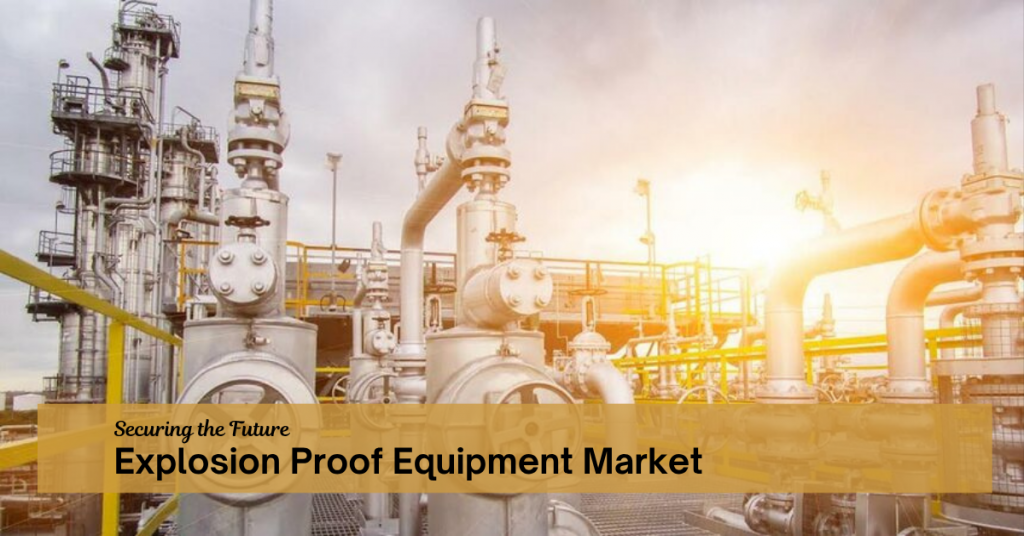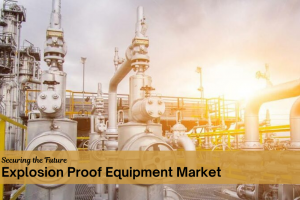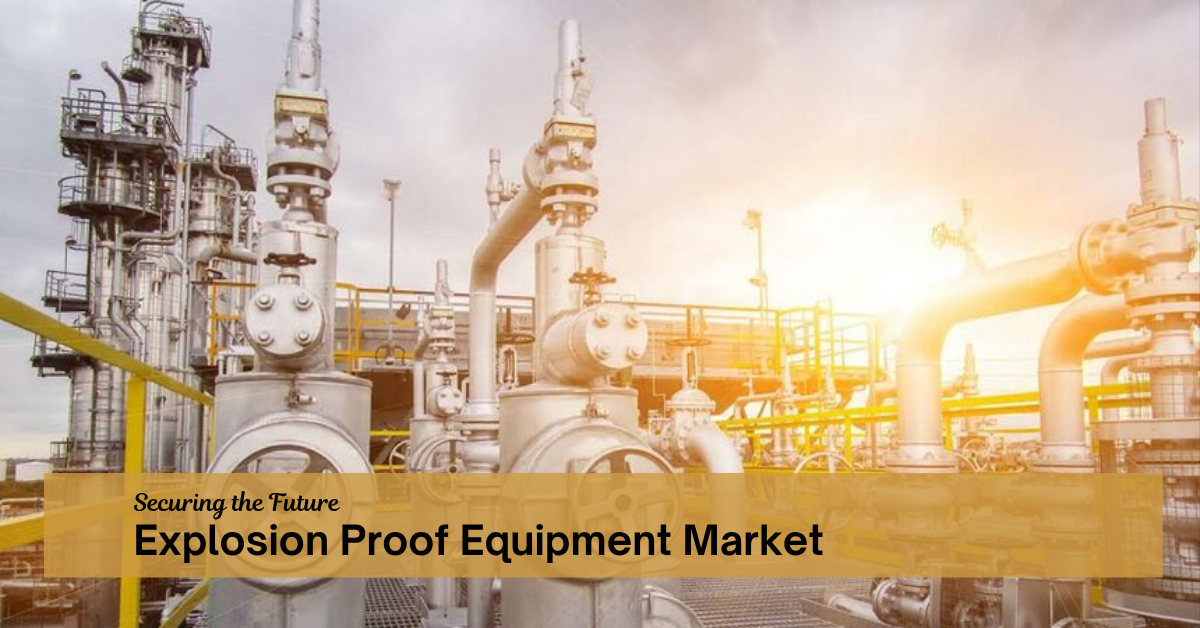
Market Overview
The Explosion Proof Equipment market size was valued at USD 6,450.00 million in 2018, reached USD 7,390.97 million in 2024, and is anticipated to reach USD 12,108.03 million by 2032, at a CAGR of 6.44% during the forecast period. This consistent growth highlights the increasing need for industrial safety solutions amid expanding hazardous environments across sectors like oil & gas, chemicals, and mining. These industries operate in high-risk zones where standard electrical and mechanical systems can pose severe threats, and the integration of explosion-proof systems becomes essential.
As industrial safety becomes a priority, global regulations and certifications such as IECEx, ATEX, and NEC standards have gained traction. These frameworks have reinforced the need for certified explosion-proof products, prompting industries to invest in sophisticated safety technologies. The push toward digitization and smart manufacturing also complements the demand for explosion-proof communication, automation, and monitoring systems.
In the context of industrial automation and Industry 4.0, explosion-proof systems are playing a pivotal role in preventing downtime, protecting human capital, and ensuring business continuity. With a rising number of oil & gas installations, chemical processing units, and mining activities in hazardous zones, manufacturers are rapidly deploying explosion-resistant lighting systems, cameras, sensors, and communication equipment. Additionally, the emergence of Asia Pacific and Latin America as key manufacturing hubs is driving a surge in demand for advanced explosion-proof equipment across emerging economies, where safety infrastructure is undergoing a major transformation. This market is poised to remain an essential pillar of industrial resilience and occupational safety for the foreseeable future.
Read full report: https://www.credenceresearch.com/report/explosion-proof-equipment-market
Market Drivers
Growing Safety Regulations Across Industries
The surge in workplace safety mandates, particularly in developed economies, is a major driver. Regulatory bodies such as OSHA, ATEX (EU), and NEC (USA) have imposed stringent guidelines on electrical and mechanical safety in hazardous environments. Companies are compelled to adopt certified explosion proof equipment to mitigate fire and explosion risks, ensuring worker safety and operational reliability.
Expansion of Oil & Gas and Petrochemical Projects
Rising global energy demand has triggered expansion in oil & gas exploration and production activities. The upstream and downstream operations involve flammable gases, vapors, and combustible dusts—making explosion-proof systems a necessity. Refineries and offshore rigs require explosion-proof junction boxes, enclosures, and lighting systems to comply with safety norms and prevent catastrophic failures.
Adoption of Industrial Automation and IIoT
The increasing penetration of industrial automation and Industrial Internet of Things (IIoT) is accelerating the demand for explosion-proof networking systems and communication devices. Monitoring systems, smart sensors, and ATEX-compliant access points are becoming standard in hazardous zones. These smart, rugged solutions ensure operational continuity and data transmission in volatile environments.
Rise in Mining and Manufacturing Activities
As developing nations expand their mining and heavy manufacturing infrastructure, explosion-proof equipment is becoming indispensable. Activities involving combustible dusts, such as coal mining and metal fabrication, demand explosion-resistant automation systems and HVAC solutions. Governments in Asia Pacific and Latin America are investing in safe industrialization, making this a strong growth lever for the market.
Market Challenges
High Initial Cost of Deployment
One of the key challenges is the high capital investment required for explosion-proof systems. These systems often involve custom engineering, specialized materials, and rigorous certification processes, increasing upfront costs. SMEs and developing regions may delay adoption due to cost concerns.
Complex Certification and Compliance Processes
Explosion-proof equipment must meet global standards such as ATEX, IECEx, and NEC. Manufacturers face lengthy approval processes, costly testing, and repeated audits, which create time-to-market delays and increase costs, especially for smaller vendors trying to scale globally.
Limited Awareness in Emerging Economies
In several developing countries, awareness about explosion-proof systems remains low. Many industries continue using conventional systems, unaware of the potential hazards. This lack of knowledge impedes market penetration and slows adoption rates in these regions.
Rapid Technological Changes
The explosion-proof equipment market is evolving with innovations in connectivity and smart automation. However, integrating these features while maintaining explosion-proof certification can be technically complex. Frequent upgrades increase the pressure on manufacturers to balance compliance and innovation.
Market Opportunity (200 words)
Emergence of Smart Explosion-Proof Devices
The rise of Industry 4.0 has created opportunities for integrating smart functionalities into explosion-proof equipment. Rugged tablets, IoT-enabled sensors, and smart cameras designed for hazardous locations are reshaping safety protocols and enabling predictive maintenance.
Growth of Infrastructure in Developing Economies
Countries in Asia Pacific, Latin America, and the Middle East are witnessing increased infrastructure development across energy, mining, and chemicals. Government initiatives to enforce industrial safety are opening new markets for certified explosion-proof equipment.
Expansion of Electric Mobility Infrastructure
With the growing installation of electric vehicle (EV) charging stations in industrial zones, explosion-proof electrical enclosures and junction boxes are becoming vital. These installations require flame-proof safety systems, especially in oil terminals, manufacturing units, and utility spaces.
Rising Focus on Renewable Energy Sector
As solar and wind energy installations increase, the demand for explosion-proof monitoring systems and automation in remote areas is growing. These systems ensure safe operations in battery banks, control rooms, and grid stations where combustible elements may exist.
Market Segmentation
By Protection Method
- Explosion Prevention
- Explosion Containment
- Explosion Segregation
By Industry
- Oil & Gas
- Chemical & Petrochemical
- Mining
- Energy & Power
- Manufacturing
- Food Processing
- Pharmaceutical
- Others
By System
- Junction Boxes & Enclosures
- Lighting Systems
- Monitoring Systems
- Explosion-Proof Cameras
- Explosion-Proof Sensors
- Others
- Communication & Networking Systems
- Access Points & Routers
- Tablets & Smartphones
- Networking Equipment
- Explosion-Proof Servers
- Others
- Signaling Devices
- Automation Systems
- Cable Glands
- HVAC Systems
- Others
By Geography
North America
- U.S.
- Canada
- Mexico
Europe
- UK
- France
- Germany
- Italy
- Spain
- Russia
- Belgium
- Netherlands
- Austria
- Sweden
- Poland
- Denmark
- Switzerland
- Rest of Europe
Asia Pacific
- China
- Japan
- South Korea
- India
- Thailand
- Indonesia
- Vietnam
- Malaysia
- Philippines
- Taiwan
- Rest of Asia Pacific
Latin America
- Brazil
- Argentina
- Peru
- Chile
- Colombia
- Rest of Latin America
Middle East & Africa
- GCC Countries
- South Africa
- Rest of the Middle East and Africa
Regional Analysis
North America
North America holds a significant share of the explosion proof equipment market, driven by stringent industrial safety standards and high investments in oil & gas and petrochemicals. The U.S., in particular, mandates ATEX/NEC compliance for all hazardous locations, ensuring strong demand across multiple sectors.
Europe
Europe’s market is largely governed by ATEX regulations, with leading countries like Germany, UK, and France pushing adoption. The region is a hub for industrial automation and has extensive use cases in food processing and pharmaceutical sectors requiring intrinsically safe solutions.
Asia Pacific
Asia Pacific is emerging as the fastest-growing region, with rapid industrialization in China, India, and Southeast Asia. Government-backed energy and manufacturing projects have led to a surge in demand for explosion proof lighting systems, automation controls, and enclosures across mining and power sectors.
Latin America
Brazil, Argentina, and Chile are experiencing moderate market growth, supported by oil & gas and mining developments. However, regulatory enforcement and certification hurdles remain a barrier in some countries, though foreign investments are improving infrastructure and awareness.
Middle East & Africa
With high oil production and processing facilities, the GCC region is a dominant market within MEA. Explosion proof equipment is essential in ensuring safety in oil terminals, refineries, and petrochemical units. South Africa also contributes to the mining-focused demand, though growth is uneven due to economic constraints.
Top Companies
- Adalet
- Siemens
- Honeywell International Plc.
- Rockwell Automation Inc.
- ABB
- Eaton Corporation
- Emerson Electric Co.
- Warom Technology Inc.
- WorkSite Lighting
- Extronics Ltd.
Future Outlook
- The global demand for explosion proof automation systems will rise in oil & gas and energy sectors.
- Integration of smart monitoring and sensor-based systems will dominate industrial safety protocols.
- Asia Pacific will become the leading region due to increased infrastructure investments.
- Manufacturers will focus on lighter, cost-efficient explosion proof devices with multi-functional use.
- Strict government regulations will push global compliance and drive technological innovation.
- Explosion proof IoT devices will enter newer industries like EV infrastructure and data centers.
- Focus will shift toward sustainability by designing eco-friendly explosion proof systems.
- Strategic partnerships will emerge between manufacturers and digital solution providers.
- Custom-designed explosion proof networking gear will see higher demand in hazardous industries.
- Rising labor safety awareness globally will continue fueling market growth and innovation.
Read full report: https://www.credenceresearch.com/report/explosion-proof-equipment-market











